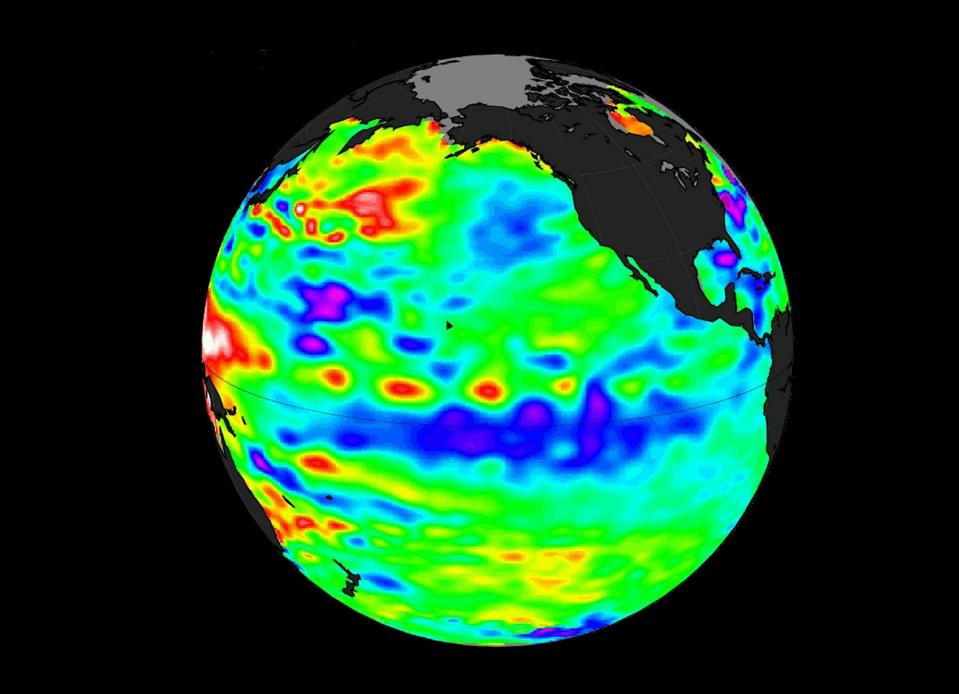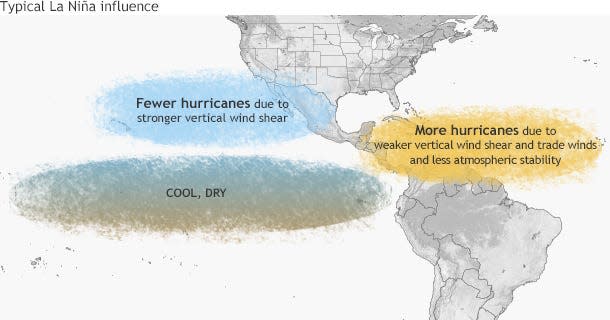La Ni?a is coming: It could worsen hurricane season and affect US weather, forecasters say
La Ni?a is still on track to form this year, government forecasters announced Thursday morning, giving the climate pattern a 62% chance of developing during the upcoming summer months (June-August).
Among other impacts, the emergence of La Ni?a could help boost the severity of the Atlantic hurricane season, a typical byproduct of the pattern.
Forecasters also reported that the recent strong El Ni?o remains in effect, but is weakening and expected to transition to "ENSO-neutral" conditions over the next few months.
The entire El Ni?o/La Ni?a cycle is known as the El Ni?o Southern Oscillation (ENSO), and its three phases (El Ni?o, La Ni?a, and ENSO-neutral), can affect weather in the U.S. and around the world.

What is La Ni?a?
La Ni?a is a natural climate pattern marked by cooler-than-average seawater in the central and eastern Pacific Ocean.
It is one of the main drivers of weather in the United States, especially during the late fall, winter and early spring. It's the opposite to the more well-known El Ni?o, which occurs when Pacific Ocean water is warmer than average.
Signs of La Ni?a are starting to be seen in the Pacific: "We're starting to see hints of cooling at the surface in a small region of the eastern Pacific," said physical scientist Michelle L'Heureux with the Climate Prediction Center.
Additionally, "there is a historical tendency for La Ni?a to follow strong El Ni?o events," according to the announcement from the Climate Prediction Center.
More: Hurricane season forecast is already looking grim: Here's why hot oceans, La Ni?a matter
Can La Ni?a worsen the Atlantic hurricane season?
Yes, according to the Climate Prediction Center, La Ni?a can contribute to an increase in Atlantic hurricane activity by weakening the wind shear over the Caribbean Sea and tropical Atlantic Basin, which enables storms to develop and intensify.
Vertical wind shear refers to the change in wind speed and direction between roughly 5,000-35,000 feet above the ground, NOAA said. Strong vertical wind shear can rip a developing hurricane apart, or even prevent it from forming. This is what can happen in the Atlantic during an El Ni?o when Atlantic hurricane activity is often suppressed.
While La Ni?a tends to increase hurricanes in the Atlantic, it also tends to decrease their numbers in the eastern and central Pacific Ocean basins.

What does La Ni?a mean for weather in the US?
La Ni?a (along with El Ni?o and ENSO-neutral) typically have minimal impact on U.S. weather in the summer, other than their effect on hurricanes. Winter is the one season in which they have the most impact.
"When we're in ENSO-neutral, other climate drivers, like the Madden-Julian Oscillation, become more noticeable," National Weather Service meteorologist Erica Grow Cei told USA TODAY. Overall, she said forecasters at the Climate Prediction Center place odds on a milder- and drier-than-average spring across most of the country.
As for La Ni?a winter impacts, a typical La Ni?a winter in the U.S. brings cold and snow to the Northwest and unusually dry conditions to most of the nation's southern tier, according to the Climate Prediction Center. The Southeast and mid-Atlantic also tend to see warmer-than-average temperatures during a La Ni?a winter.
Meanwhile, New England and the Upper Midwest into New York tend to see colder-than-average temperatures, the Weather Channel said.
Contributing: Dinah Voyles Pulver
This article originally appeared on USA TODAY: La Ni?a is coming: Hurricane season forecast, definitions explained
